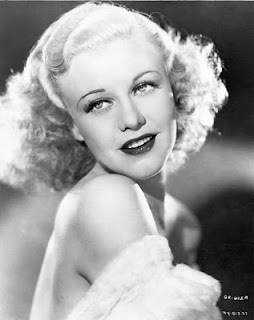On this date in 1867, Burton C. Mossman, Old West Lawman
and rancher is born in Aurora, Illinois.
Little is known about Mossman's childhood in Illinois,
though he apparently learned to be self-reliant and resourceful at a young age.
When he was 21, Mossman left home and moved to Mexico, where he quickly began
proving himself one of the most canny and successful ranchers in the territory.
By age 30, he not only had his own spread in New Mexico, but was also the
superintendent of a two-million-acre ranch in northern Arizona running 60,000
cattle. As the size of the southwestern cattle industry increased, cattle
rustlers began to take advantage of the lack of surveillance on the isolated
ranges to steal stock. In 1901, the territory of Arizona responded by
organizing a ranger force to rid the region of rustlers and other outlaws. The
governor of Arizona convinced Mossman to sign on as the first captain of the
Arizona Rangers.
Mossman was suited to the task. Courageous and skilled
with a pistol, he had a knack for surprising rustlers while they were still in
possession of stolen cattle, freshly butchered beef, green hides, and other
incriminating evidence. Though he could use violence to good effect when
needed, Mossman preferred to trick his quarry into giving up peacefully when
possible. In one instance, Mossman rode south alone in pursuit of the
multiple-murderer Agostine Chacon, who had fled to Mexico. Clearly out of his
jurisdiction, Mossman had to act with finesse. With the assistance of Burt
Alvard, an outlaw turned lawman, Mossman convinced Chacon that he and Alvard
were also outlaws and would help him steal several top horses from a ranch in
southern Arizona. When the men crossed the border into Arizona, Mossman
revealed his true identity and arrested Chacon, who was later hanged.
The Chacon arrest was a typical example of Mossman's
approach to dealing with Arizona rustlers and outlaws. "If they come along
easy, everything will be all right," he once explained. "If they
don't, well, I just guess we can make pretty short work of them... Some of them
will object, of course. They'll probably try a little gunplay as a bluff, but I
shoot fairly well myself, and the boys who back me up are handy enough with
guns. Any rustler who wants to yank on the rope and kick up trouble will find
he's up against it." After a long and adventurous career with the Arizona
Rangers, Mossman eventually returned to the more peaceful life of a rancher. By
the time he retired from ranching in 1944, he had business interests in cattle
operations from Mexico to Montana, and more than a million cattle wore his
brand. He lived out the remainder of his life at his comfortable ranch in
Roswell, New Mexico, and died in 1956 at the age of 89.
On this date in 1927, the first women's federal prison opens
in Alderson, West Virginia.
All women serving federal sentences of more than a year
were to be brought here. Run by Dr. Mary B. Harris, the prison's buildings,
each named after social reformers, sat atop 500 acres. One judge described the
prison as a "fashionable boarding school." In some respects the judge
was correct: The overriding purpose of the prison was to reform the inmates,
not punish them. The prisoners farmed the land and performed office work in
order to learn how to type and file. They also cooked and canned vegetables and
fruits. Other women's prisons had similar ideals. At Bedford Hills in New York,
there were no fences, and the inmates lived in cottages equipped with their own
kitchen and garden. The prisoners were even given singing lessons. Reform
efforts had a good chance for success since the women sent to these prisons
were far from hardened criminals. At the Federal Industrial Institution, the
vast majority of the women were imprisoned for drug and alcohol charges imposed
during the Prohibition era.







































